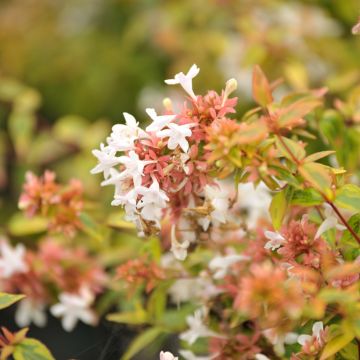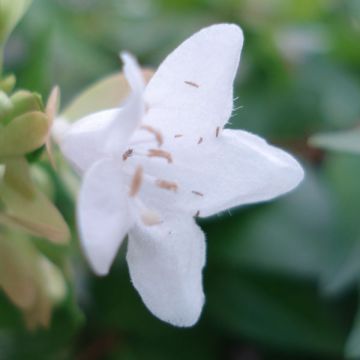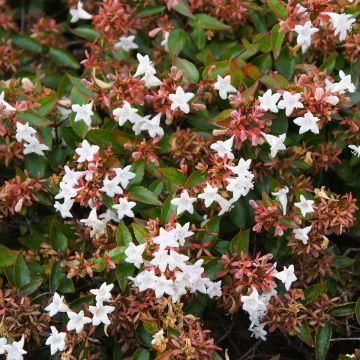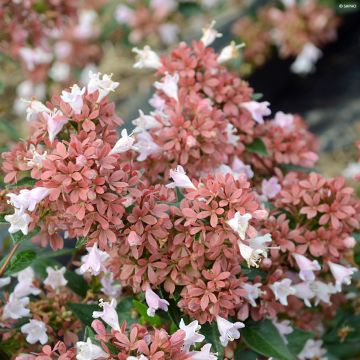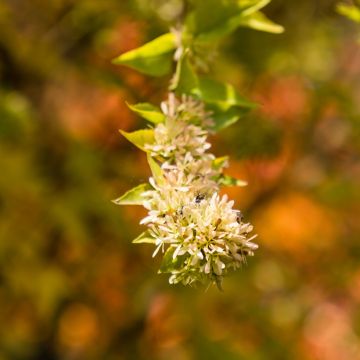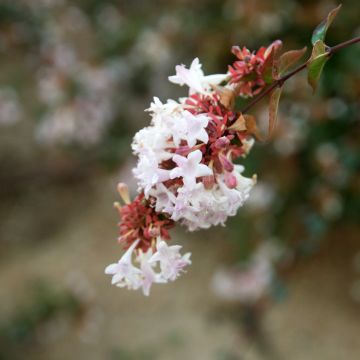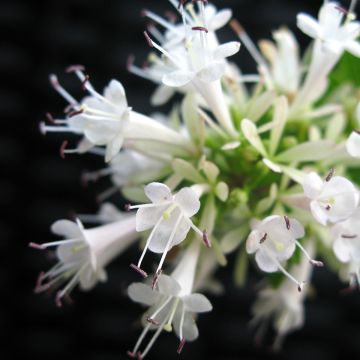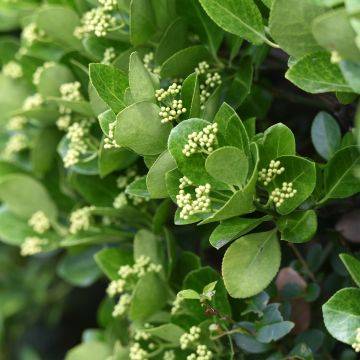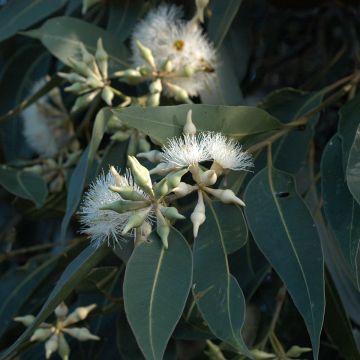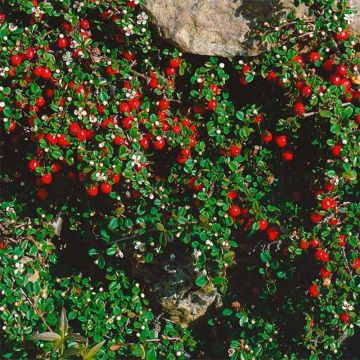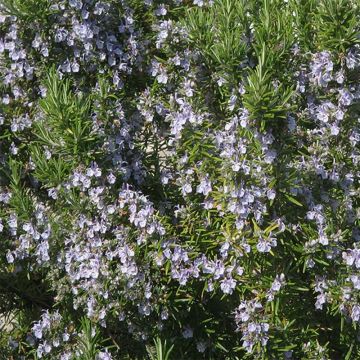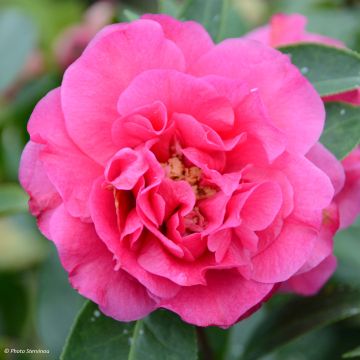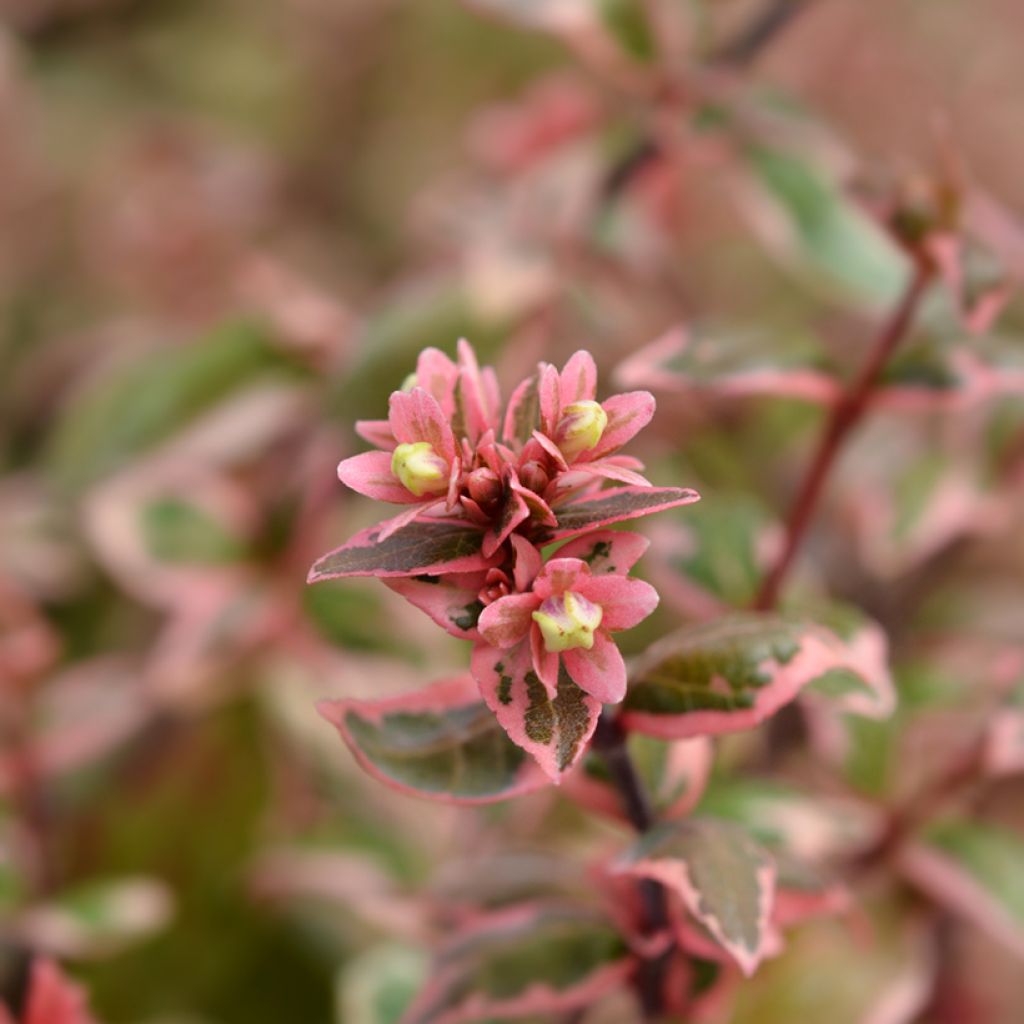

Abelia Magic Daydream
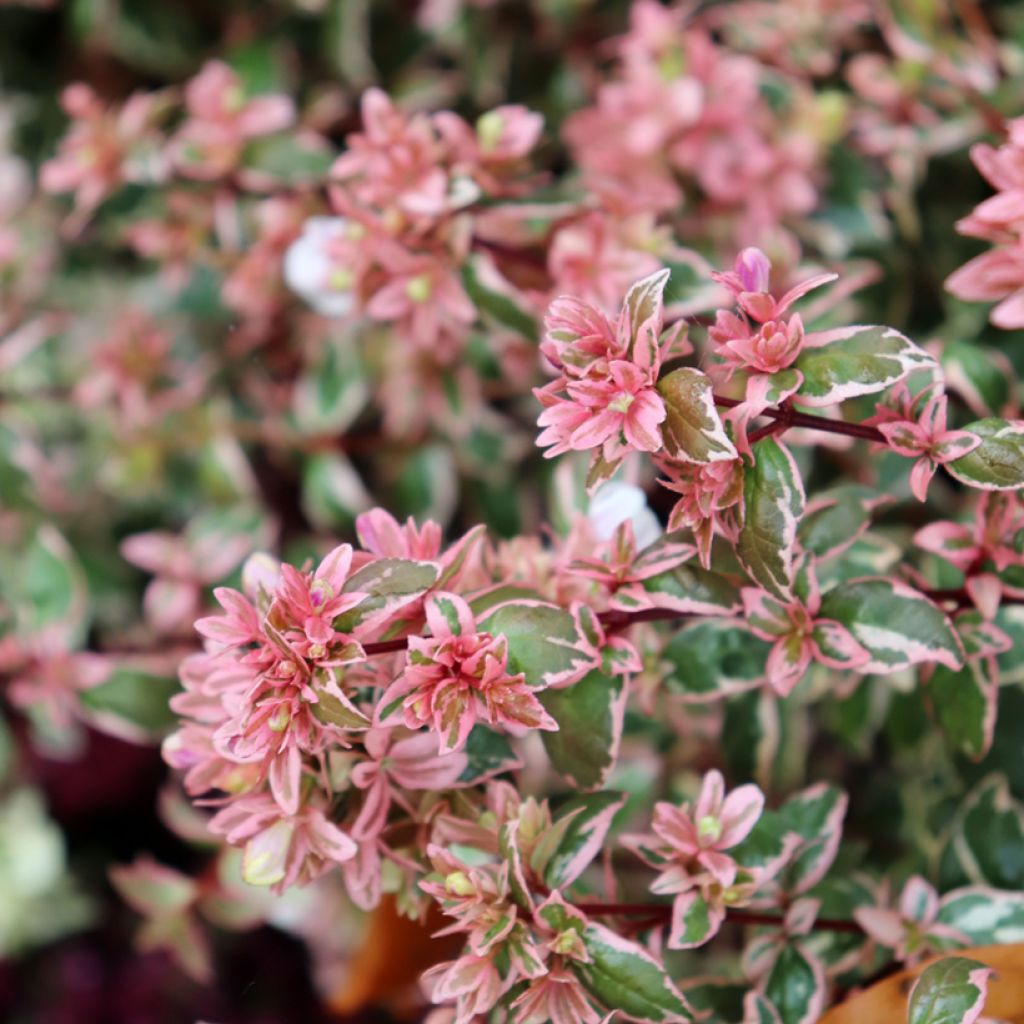

Abelia Magic Daydream
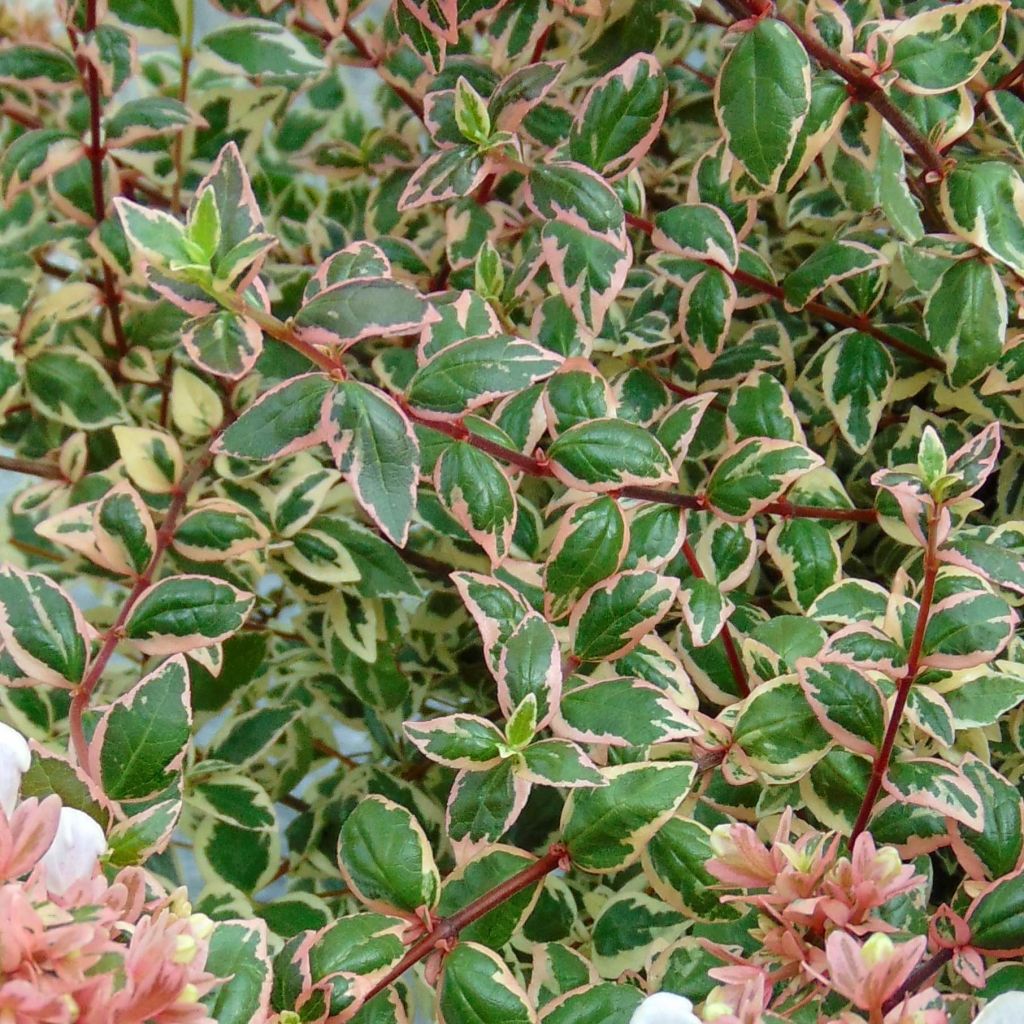

Abelia Magic Daydream
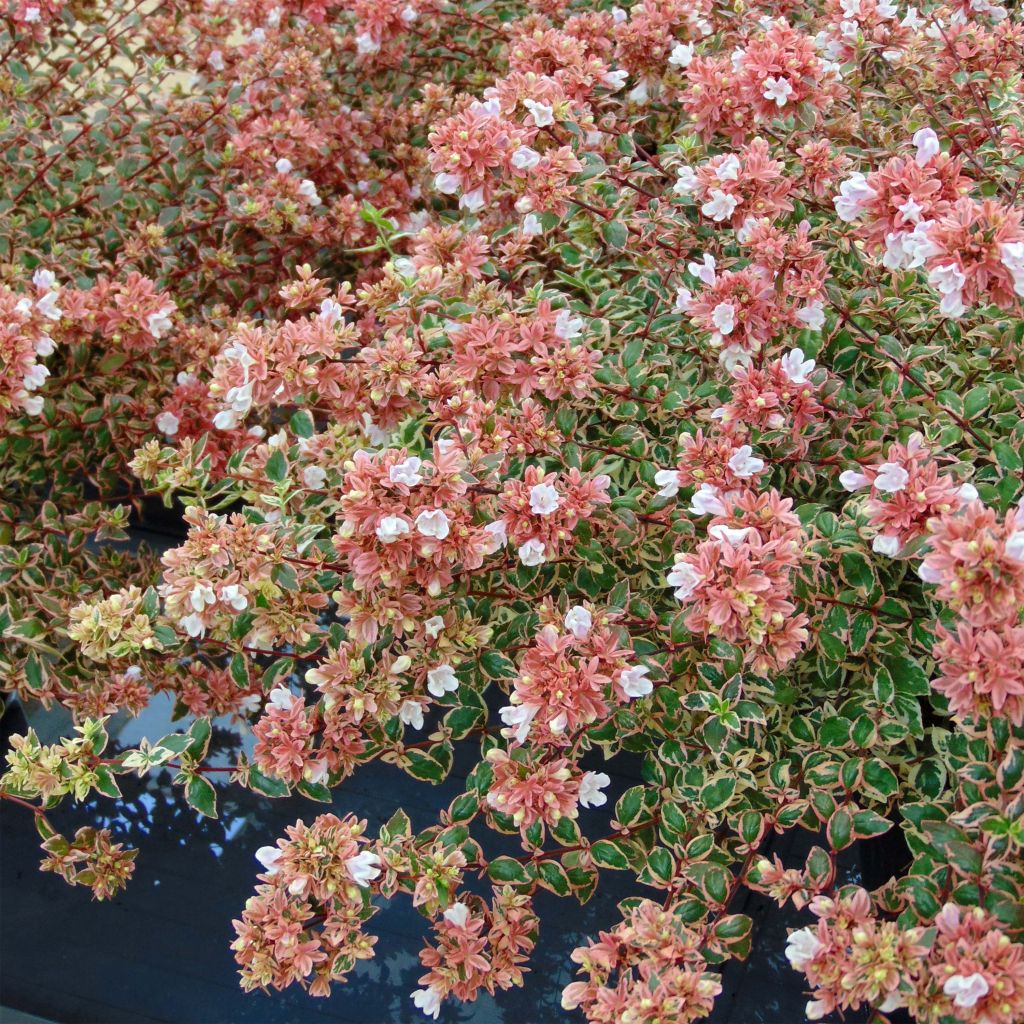

Abelia Magic Daydream
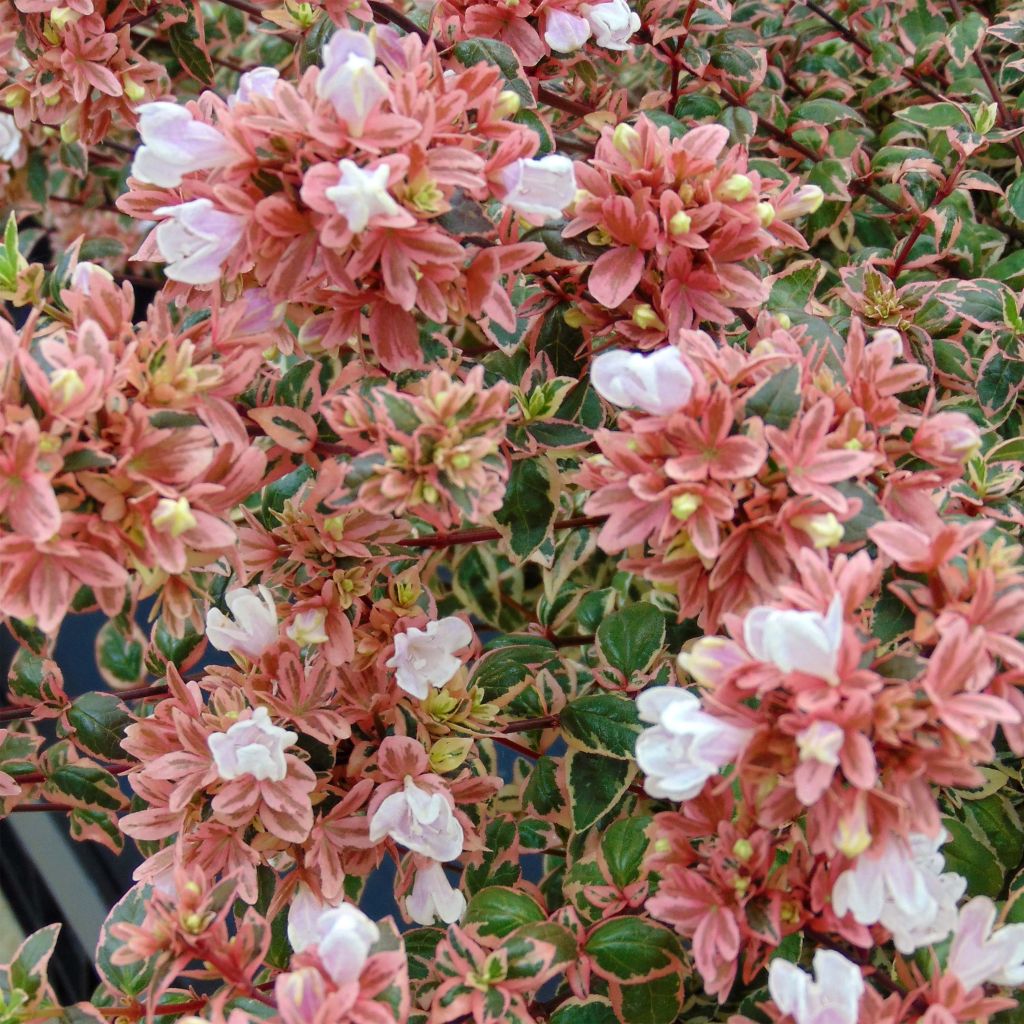

Abelia Magic Daydream
Abelia Magic Daydream
Abelia x grandiflora Magic Daydream
Glossy abelia
This item cannot be shipped to the selected country
Delivery charge from €5.90
Delivery charge from €5.90
More information
Schedule delivery date,
and select date in basket
This plant carries a 24 months recovery warranty
More information
We guarantee the quality of our plants for a full growing cycle, and will replace at our expense any plant that fails to recover under normal climatic and planting conditions.
From €5.90 for pickup delivery and €6.90 for home delivery
Express home delivery from €8.90.
From €5.90 for pickup delivery and €6.90 for home delivery
Express home delivery from €8.90.

Does this plant fit my garden?
Set up your Plantfit profile →
Description
The Abelia (x) grandiflora 'Magic Daydream' is a new variety of dwarf Abelia that stands out for its beautiful variegated foliage and good hardiness. Forming a very tight ball, this bush is adorned with ever-changing foliage that is as bright and colourful, variegated from very pale yellow to cream, white, and then pink in cooler weather. It also offers gently fragrant summer flowering, in the form of white-pink bells that give way in autumn to a rich mantle of rusty bracts, persistant on the bush. A variety that is quite attractive, suitable for placing in the foreground of large groups, in a low hedge, or in a large container on the terrace.
The Abelia x grandiflora is a bush from the caprifoliaceae family. This hybrid is the result of cross-breeding between Abelia chinensis, native to temperate China, and Abelia uniflora, which comes from eastern China. 'Magic Daydream' is a recent Dutch creation that won the silver medal at Plantarium in 2017. This bush has a dense, compact, slightly spreading habit. It will not exceed 60cm (23.6in) in height with an average spread of 80cm. Its growth is rather slow. The long, lightly fragrant flowers last all summer, from July to September-October, when few other bushes are in bloom. Its countless small funnel-shaped corollas, ranging in colour from white to pink depending on the season, are gathered in terminal panicles. As they fade, they give way to beautiful calyxes composed of rusty bracts, which are very decorative against the autumn foliage. The branches of this Abelia bear small, glossy, semi-evergreen leaves, the variegation of which also evolves throughout the seasons, changing from yellow to cream, white, and then pink on a green-grey background. The oval leaves, more or less toothed, take on a more pinkish hue with the first cool nights and persist for a long time on the branch.
'Magic Daydream' Abelia, with its compact habit resembling a bright cushion, enriches the range of plants suitable for growing in large pots as well as small gardens. It can also serve as a ground cover, at the front of groups or along a pathway. It can be grouped with other low bushes such as Euonymus fortunei 'Emerald Gaiety', Berberis thumbergii 'Atropurpurea Nana', Ceanothus repens, or Genista lydia. This variety, once well established, is resistant to drought and hardy to about -15°C (5°F) in well-drained soil. It is best cultivated in pots in colder regions and protected over winter.
Report an error about the product description
Abelia Magic Daydream in pictures
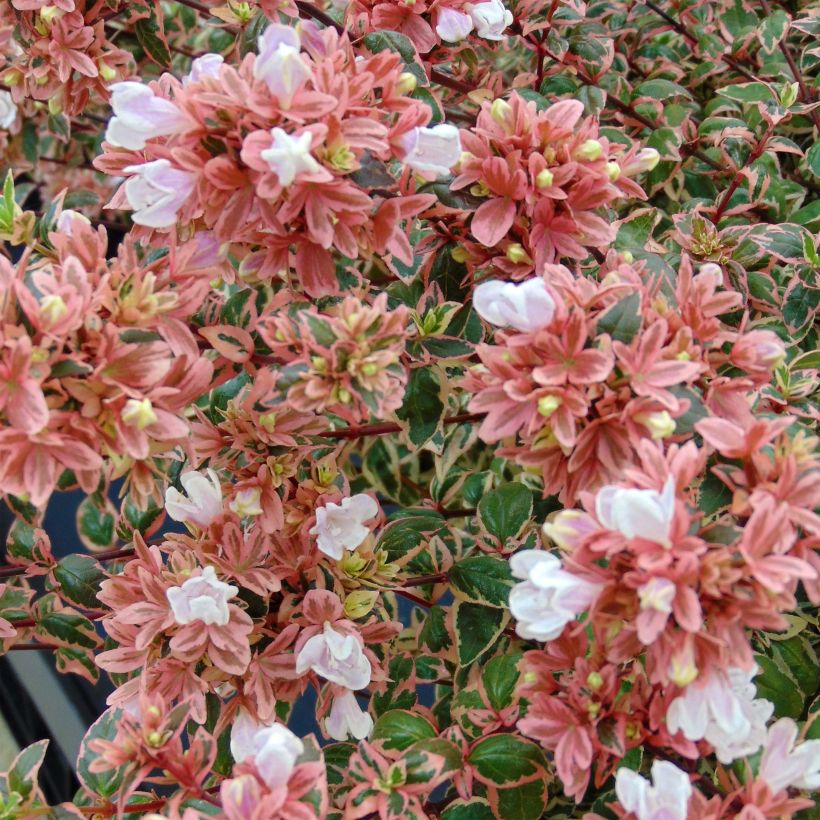

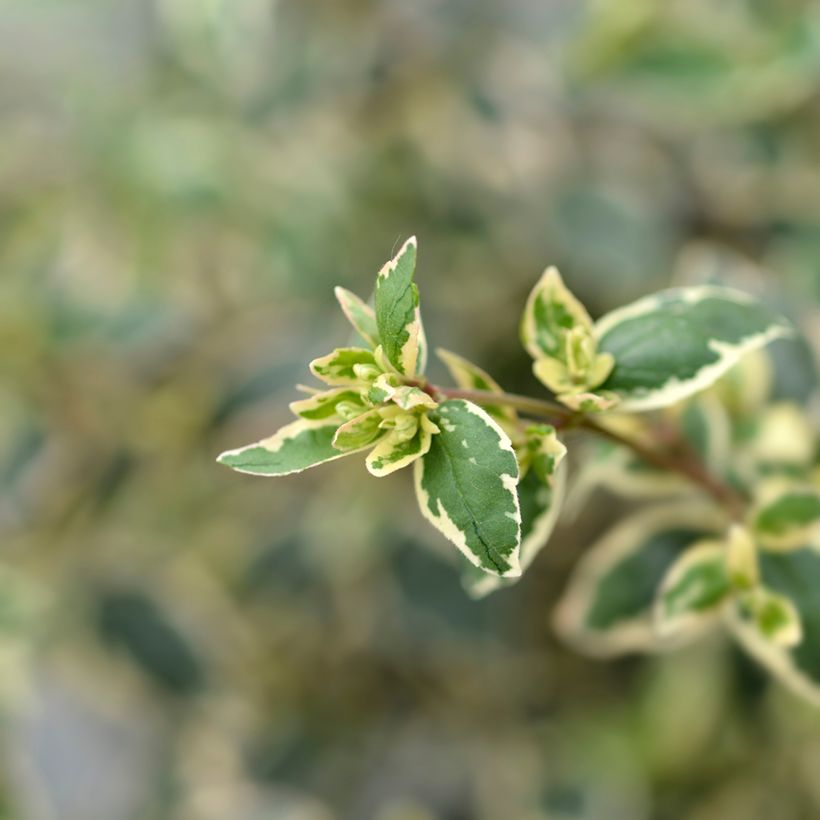

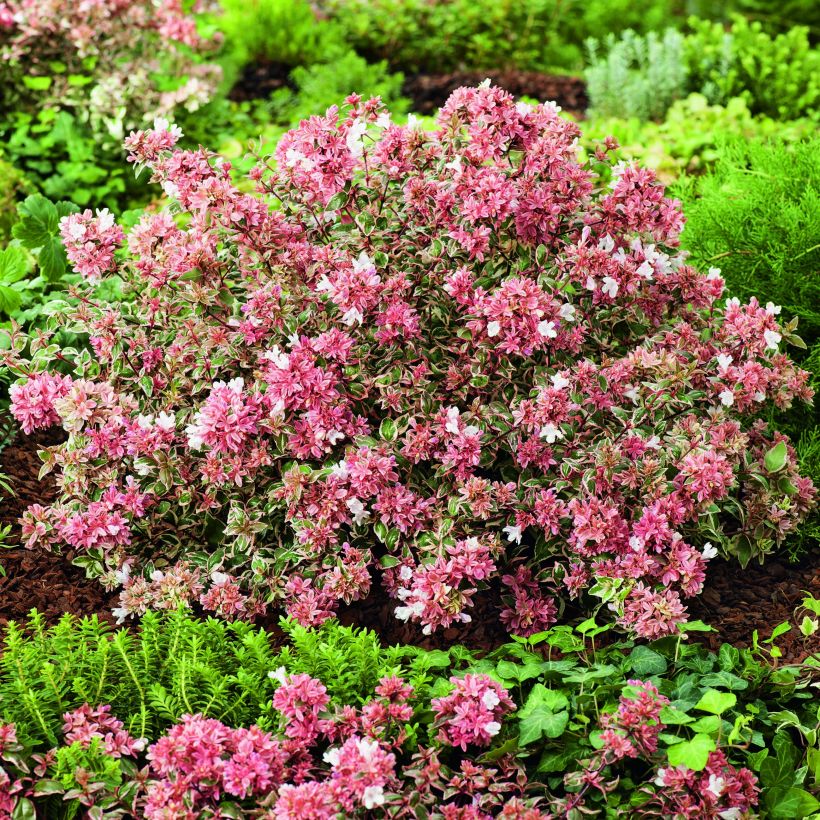

Plant habit
Flowering
Foliage
Botanical data
Abelia
x grandiflora
Magic Daydream
Caprifoliaceae
Glossy abelia
Cultivar or hybrid
Other Abelia
Planting and care
Abelia grandiflora 'Magic Daydream' thrives in sunny or partially shady locations, in sheltered positions. Plant it in spring or early autumn in normal but light soil, preferably fertile and well-drained. Ideally, it should be planted in a balanced mixture of compost and garden soil. Easy to grow, it requires little maintenance. This plant is resistant to sea spray and winds, but needs protection when young, from heavy frosts, and cold, dry winds in winter. Between February and April, before new growth begins, prune out any diseased or dead wood and retain only the vigorous branches to maintain the bush's compact habit. It is not attacked by pests or predators. This variety can withstand short periods of around -15°C (5°F), in sheltered positions and well-drained soil.
Planting period
Intended location
Care
-
, onOrder confirmed
Reply from on Promesse de fleurs
Evergreen shrubs
Haven't found what you were looking for?
Hardiness is the lowest winter temperature a plant can endure without suffering serious damage or even dying. However, hardiness is affected by location (a sheltered area, such as a patio), protection (winter cover) and soil type (hardiness is improved by well-drained soil).

Photo Sharing Terms & Conditions
In order to encourage gardeners to interact and share their experiences, Promesse de fleurs offers various media enabling content to be uploaded onto its Site - in particular via the ‘Photo sharing’ module.
The User agrees to refrain from:
- Posting any content that is illegal, prejudicial, insulting, racist, inciteful to hatred, revisionist, contrary to public decency, that infringes on privacy or on the privacy rights of third parties, in particular the publicity rights of persons and goods, intellectual property rights, or the right to privacy.
- Submitting content on behalf of a third party;
- Impersonate the identity of a third party and/or publish any personal information about a third party;
In general, the User undertakes to refrain from any unethical behaviour.
All Content (in particular text, comments, files, images, photos, videos, creative works, etc.), which may be subject to property or intellectual property rights, image or other private rights, shall remain the property of the User, subject to the limited rights granted by the terms of the licence granted by Promesse de fleurs as stated below. Users are at liberty to publish or not to publish such Content on the Site, notably via the ‘Photo Sharing’ facility, and accept that this Content shall be made public and freely accessible, notably on the Internet.
Users further acknowledge, undertake to have ,and guarantee that they hold all necessary rights and permissions to publish such material on the Site, in particular with regard to the legislation in force pertaining to any privacy, property, intellectual property, image, or contractual rights, or rights of any other nature. By publishing such Content on the Site, Users acknowledge accepting full liability as publishers of the Content within the meaning of the law, and grant Promesse de fleurs, free of charge, an inclusive, worldwide licence for the said Content for the entire duration of its publication, including all reproduction, representation, up/downloading, displaying, performing, transmission, and storage rights.
Users also grant permission for their name to be linked to the Content and accept that this link may not always be made available.
By engaging in posting material, Users consent to their Content becoming automatically accessible on the Internet, in particular on other sites and/or blogs and/or web pages of the Promesse de fleurs site, including in particular social pages and the Promesse de fleurs catalogue.
Users may secure the removal of entrusted content free of charge by issuing a simple request via our contact form.
The flowering period indicated on our website applies to countries and regions located in USDA zone 8 (France, the United Kingdom, Ireland, the Netherlands, etc.)
It will vary according to where you live:
- In zones 9 to 10 (Italy, Spain, Greece, etc.), flowering will occur about 2 to 4 weeks earlier.
- In zones 6 to 7 (Germany, Poland, Slovenia, and lower mountainous regions), flowering will be delayed by 2 to 3 weeks.
- In zone 5 (Central Europe, Scandinavia), blooming will be delayed by 3 to 5 weeks.
In temperate climates, pruning of spring-flowering shrubs (forsythia, spireas, etc.) should be done just after flowering.
Pruning of summer-flowering shrubs (Indian Lilac, Perovskia, etc.) can be done in winter or spring.
In cold regions as well as with frost-sensitive plants, avoid pruning too early when severe frosts may still occur.
The planting period indicated on our website applies to countries and regions located in USDA zone 8 (France, United Kingdom, Ireland, Netherlands).
It will vary according to where you live:
- In Mediterranean zones (Marseille, Madrid, Milan, etc.), autumn and winter are the best planting periods.
- In continental zones (Strasbourg, Munich, Vienna, etc.), delay planting by 2 to 3 weeks in spring and bring it forward by 2 to 4 weeks in autumn.
- In mountainous regions (the Alps, Pyrenees, Carpathians, etc.), it is best to plant in late spring (May-June) or late summer (August-September).
The harvesting period indicated on our website applies to countries and regions in USDA zone 8 (France, England, Ireland, the Netherlands).
In colder areas (Scandinavia, Poland, Austria...) fruit and vegetable harvests are likely to be delayed by 3-4 weeks.
In warmer areas (Italy, Spain, Greece, etc.), harvesting will probably take place earlier, depending on weather conditions.
The sowing periods indicated on our website apply to countries and regions within USDA Zone 8 (France, UK, Ireland, Netherlands).
In colder areas (Scandinavia, Poland, Austria...), delay any outdoor sowing by 3-4 weeks, or sow under glass.
In warmer climes (Italy, Spain, Greece, etc.), bring outdoor sowing forward by a few weeks.

































